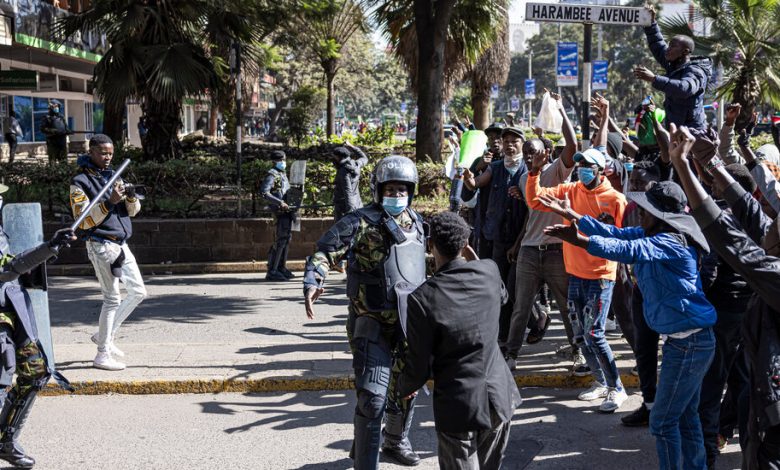Behind the Unrest in Kenya, a Staggering and Painful National Debt

The immediate trigger for the raging protest that gripped Kenya’s capital city on Tuesday was a raft of tax increases — additional shillings that ordinary citizens would owe their government. The underlying cause, though, are the billions of dollars their government owes its creditors.
Kenya has the fastest growing economy in Africa and a vibrant business center. But its government is desperate to stave off default. The country’s staggering $80 billion in domestic and foreign public debt accounts for nearly three-quarters of Kenya’s entire economic output, according to a recent report from the United Nations Conference on Trade and Development. Interest payments alone are eating up 27 percent of the revenue collected.
The prospect of repayment is years away.
The debts that are causing misery in Kenya can be found across Africa. More than half the people on the continent live in countries that spend more on interest payments than they do on health or education.
“The kids in this generation that won’t have education today are going to be scarred for life,” said Joseph Stiglitz, a former chief economist at the World Bank. He noted that there had been increasing evidence that “countries who go through a crisis don’t recover — maybe ever — to where they would have been.”
The global debt crisis is the relatively bland label used to describe the brutal loops of unsustainable borrowing and bailouts that have long ensnared developing nations. This latest cycle — considered to be the worst on record — was precipitated by events far beyond any single country’s control.
The deadly coronavirus pandemic shuttered already fragile economies. The sudden need to provide vaccines, medical care, protective clothing to hospital workers and subsidies to people unable to afford food or cooking oil further depleted government bank accounts.
